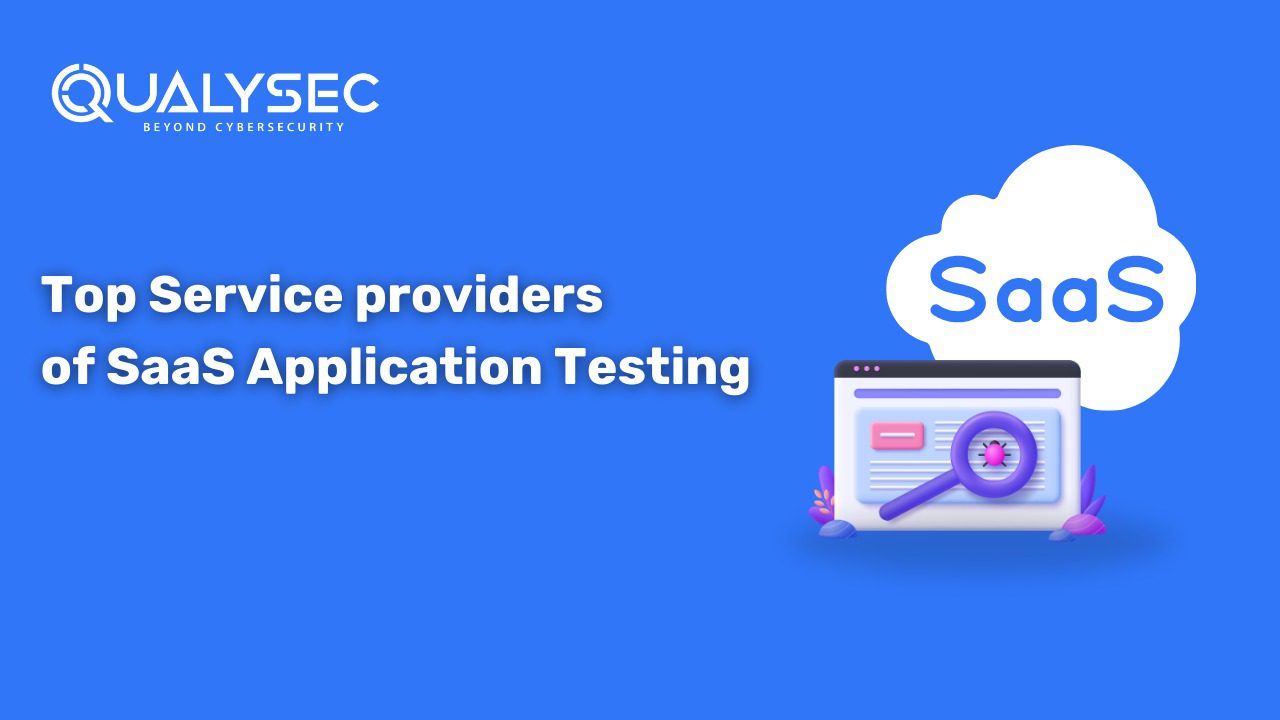© 2024 Qualysec.com Disclaimer Privacy Policy Terms & Conditions

In today’s rapidly advancing digital landscape, the proliferation of Software as a Service (SaaS) application testing has redefined the way businesses operate. It offers unparalleled convenience and flexibility. However, the convenience of SaaS comes with an inherent responsibility to prioritize security. SaaS application security is not merely an afterthought but a fundamental aspect that requires meticulous attention.
As organizations increasingly migrate their operations to the cloud, the need for robust security measures becomes more critical than ever. This blog aims to unravel the complexities of SaaS application security testing. Thus, shedding light on the intricacies of testing methodologies. Also sheds light on the key components of security management, and the potential risks of overlooking this vital facet.
Understanding SaaS Application testing involves navigating a dynamic landscape where the traditional boundaries of on-premises solutions blur. Unlike their static counterparts, SaaS applications operate in a fluid, cloud-based environment, necessitating an adaptive and continuous approach to security. Dynamic factors such as frequent updates, remote accessibility, and shared resources demand a security framework that can evolve in tandem. This adaptability is not only crucial for safeguarding against emerging threats but also for maintaining compliance with evolving regulations. As we delve into the components of SaaS security management, encryption emerges as a linchpin, safeguarding sensitive data from prying eyes. Access controls play an equally pivotal role, serving as the gatekeepers that regulate user permissions and thwart unauthorized access attempts. In essence, a robust security management strategy for SaaS applications requires a multifaceted approach, addressing the dynamic nature of the cloud environment and the diverse threats it presents.
In the intricate landscape of SaaS application security, organizations must confront and mitigate potential risks. Foremost among these risks is the ominous threat of data breaches, casting a shadow over the interconnected nature of SaaS applications.
SaaS applications, by their very nature, involve the storage and transfer of vast amounts of sensitive information. This makes them lucrative targets for malicious actors seeking to exploit vulnerabilities. A data breach not only jeopardizes the confidentiality of critical data but also sends shockwaves through the trust that customers and stakeholders place in the organization. The consequences extend beyond financial losses to impact the reputation and credibility of the entire enterprise.
Adding another layer of complexity, compliance issues pose significant challenges. Failing to meet regulatory requirements can lead to severe legal consequences, including fines and sanctions. The reputational damage resulting from non-compliance can be equally detrimental, eroding the trust of customers and stakeholders. In the dynamic and evolving landscape of cybersecurity threats, a proactive stance is imperative. It goes beyond safeguarding against known risks; it involves anticipating and preparing for emerging threats.
|
Risk |
Description |
Impact |
|
Data Breaches |
Involves unauthorized access to sensitive |
Jeopardizes data confidentiality and trust |
|
Compliance Issues |
Failure to meet regulatory requirements |
Legal |
Understanding these risks is the first step toward building a robust defense. By acknowledging and addressing these challenges, organizations can proactively secure their SaaS applications against the ever-evolving landscape of cybersecurity threats.
In the realm of SaaS application security, a strategic approach to risk mitigation is indispensable. Two primary methodologies, penetration testing and vulnerability assessment, form the cornerstone of this comprehensive strategy.
Penetration testing is akin to fortifying a castle against potential attacks. This proactive approach involves simulating cyberattacks to identify vulnerabilities and assess the effectiveness of existing security measures. By adopting the perspective of a malicious actor, this method strives to uncover weak points in the SaaS application’s defense before adversaries can exploit them. It’s a crucial step in ensuring that the digital fortress remains resilient and impenetrable.
On the other front, vulnerability assessment systematically identifies and prioritizes vulnerabilities within the SaaS application. This method ensures that resources are strategically allocated to address the most critical issues first. By conducting a thorough examination of potential weaknesses, organizations can focus their efforts on fortifying the areas of greatest vulnerability, enhancing the overall security posture.
In the dynamic world of SaaS, a combination of automated testing tools and manual testing is a common strategy. Automated tools play a vital role by conducting regular scans, and efficiently identifying potential weaknesses. Meanwhile, manual testing, performed by skilled cybersecurity professionals, uncovers nuanced vulnerabilities that automated detection might overlook. The synergy between these approaches is key to maintaining a robust defense against the ever-evolving threat landscape of SaaS applications.
Here’s a breakdown in tabular form:
|
Security Testing Type |
Methodology |
Purpose |
|
Penetration Testing |
Simulating Cyberattacks |
Identify and assess vulnerabilities proactively |
|
Vulnerability Assessment |
Systematic Identification and Prioritization |
Strategically allocate resources for defense |
|
Automated Testing Tools |
Regular Scans |
Efficiently identify potential weaknesses |
|
Manual Testing |
Human Expertise |
Uncover nuanced vulnerabilities that automation may |
SaaS security testing is a multifaceted process that leverages a combination of automated tools and manual intervention to ensure comprehensive coverage. Automated testing tools play a crucial role in the efficiency and speed of security assessments. These tools conduct regular scans, probing the SaaS application for vulnerabilities, misconfigurations, and potential security gaps. By automating routine tasks, organizations can achieve a consistent and repeatable testing process, identifying common issues quickly. However, automation has its limitations, especially in detecting subtle or context-specific vulnerabilities.
Manual testing, conducted by skilled cybersecurity professionals, is indispensable for a thorough evaluation of SaaS security. Human intuition and experience are unparalleled in identifying nuanced vulnerabilities that automated tools may overlook. Manual testing involves simulating real-world scenarios. It adopts the perspective of a potential attacker to uncover vulnerabilities that could be exploited.
As organizations navigate the intricacies of SaaS application testing, adopting best practices becomes instrumental in building a robust defense. Regular updates are paramount, not only for the SaaS application itself but also for the security protocols in place. Timely updates address known vulnerabilities and reinforce the security framework to adapt to emerging threats. Employee training is equally vital, as the human element is often a weak link in the security chain.
Implementing data encryption ensures that even if unauthorized access occurs, the intercepted data remains indecipherable and also:
The decision to forego SaaS penetration testing can have profound implications, introducing significant vulnerabilities and risks to an organization’s overall security posture. The absence of regular pen testing leaves undiscovered vulnerabilities lurking beneath the surface, creating potential entry points for cyberattacks that can have far-reaching consequences.
|
Risk |
Description |
Potential Impact |
|
Undiscovered Vulnerabilities |
Lurk beneath the surface, awaiting exploitation by malicious actors |
Entry points for cyberattacks and data breaches |
|
Data Breaches |
Unauthorized access to sensitive data without preventive measures |
Financial losses, reputational damage |
|
Unauthorized Access |
Inability to identify and rectify weaknesses in user authentication |
Compromised data and unauthorized system access |
|
Disruption of Services |
Potential disruptions due to unaddressed vulnerabilities |
The consequences of such breaches extend beyond immediate financial losses. They have a profound impact on the organization’s reputation, eroding the trust of customers and stakeholders alike.
| Compromised Data | Description | Potential Impact |
|---|---|---|
| Customer Information | Exposure of sensitive customer data without adequate protection | Loss of customer trust, reputational damage |
| Intellectual Property | Vulnerability of proprietary information without robust security | Erosion of competitive advantage |
| Sensitive Business Data | Unprotected critical business information susceptible to exploitation | Financial losses, compromised business operations |
The regulatory landscape further exacerbates the risks. Non-compliance with security standards due to lax security practices can result in hefty fines and legal repercussions.
| Regulatory Risks | Description | Potential Impact |
|---|---|---|
| Non-Compliance | Failure to meet security standards and regulations | Legal consequences, financial penalties |
| Legal Repercussions | Consequences of not safeguarding against regulatory requirements | Damage to reputation, financial liabilities |
In essence, the disadvantages of skipping SaaS application testing extend beyond immediate threats, encompassing long-term consequences that can undermine the stability and success of an organization. Recognizing and addressing these risks is imperative for ensuring the resilience and security of SaaS applications in an increasingly complex digital landscape.

Navigating the intricate landscape of SaaS security requires a strategic partnership with a company that not only understands the nuances of cybersecurity but also stays ahead of the evolving threat landscape. Qualysec emerges as the beacon of excellence in SaaS application testing, offering a comprehensive suite of services tailored to safeguard your digital assets.
At the core of Qualysec’s offerings lies unparalleled expertise. Our team comprises seasoned professionals with a deep understanding of the intricate nuances of SaaS application security. With a wealth of experience in identifying and mitigating vulnerabilities, we bring a proactive approach that goes beyond mere detection – we anticipate and neutralize potential threats before they can manifest.
At Qualysec, our team comprises seasoned offensive specialists and security researchers. They ensure our clients have access to the latest security techniques. Our VAPT services incorporate human expertise and automated tools, delivering clear findings, mitigation strategies, and post-assessment consulting—all adhering to industry standards. Our comprehensive service portfolio includes:
Our approach is not one-size-fits-all. Recognizing the uniqueness of each SaaS application testing, Qualysec customizes its solutions to address specific needs and vulnerabilities. We understand that the security landscape is dynamic, and a cookie-cutter approach is insufficient. By tailoring our services to the intricacies of your application, we ensure that every potential vulnerability is identified and addressed, providing a bespoke security solution that aligns with your business objectives.
Choosing to work with Qualysec guarantees several advantages. These advantages include an expert team of highly skilled and certified cybersecurity professionals dedicated to protecting. Protecting digital assets, detailed reports with actionable recommendations for issue resolution. With additional reliable support for ongoing assistance, seamless collaboration with development teams. These are essential for efficient issue resolution, and advanced tools and techniques for accurate vulnerability detection without false positives.
Empower your SaaS defenses! Take the lead in security. Download our SaaS Security Testing repot.
Conclusion:
In the fast-paced digital era, where the stakes of cybersecurity are higher than ever, the choice of a SaaS application testing partner is a critical decision. Qualysec stands as a fortress against the myriad threats that could compromise your SaaS applications. Partnering with Qualysec is not merely an investment in security; it is an investment in the resilience and longevity of your organization.
By choosing Qualysec, you are not just selecting a vendor; you are aligning with a strategic partner committed to fortifying your digital defenses. The peace of mind that comes with our expertise, cutting-edge tools, and customized solutions is invaluable in an era where cyber threats evolve at an unprecedented pace. Don’t leave your SaaS applications vulnerable to exploitation. Take the proactive step toward comprehensive security with Qualysec Technologies.
Choose Qualysec for not just cybersecurity audits but also a strategic partnership that propels your organization toward a resilient and secure future. Join our community of satisfied clients who have experienced the tangible benefits of our expertise, and let us guide you on the path to cybersecurity excellence just by clicking here with us and elevate your SaaS security to new heights. Secure today, resilient tomorrow.
An Exciting News for IT professionals, cybersecurity experts, and SaaS providers-
Join our webinar on Wednesday, 30th October 2024, at 6:00 PM IST, and learn expert strategies to protect your SaaS platform from cyber threats. Registered here now.





Plot No:687, Near Basudev Wood Road,
Saheed Nagar, Odisha, India, 751007
No: 72, OJone India, Service Rd, LRDE Layout, Doddanekundi, India,560037
© 2024 Qualysec.com Disclaimer Privacy Policy Terms & Conditions


No: 72, OJone India, Service Rd, LRDE Layout, Doddanekundi, India,560037
© 2024 Qualysec.com Disclaimer Privacy Policy Terms & Conditions